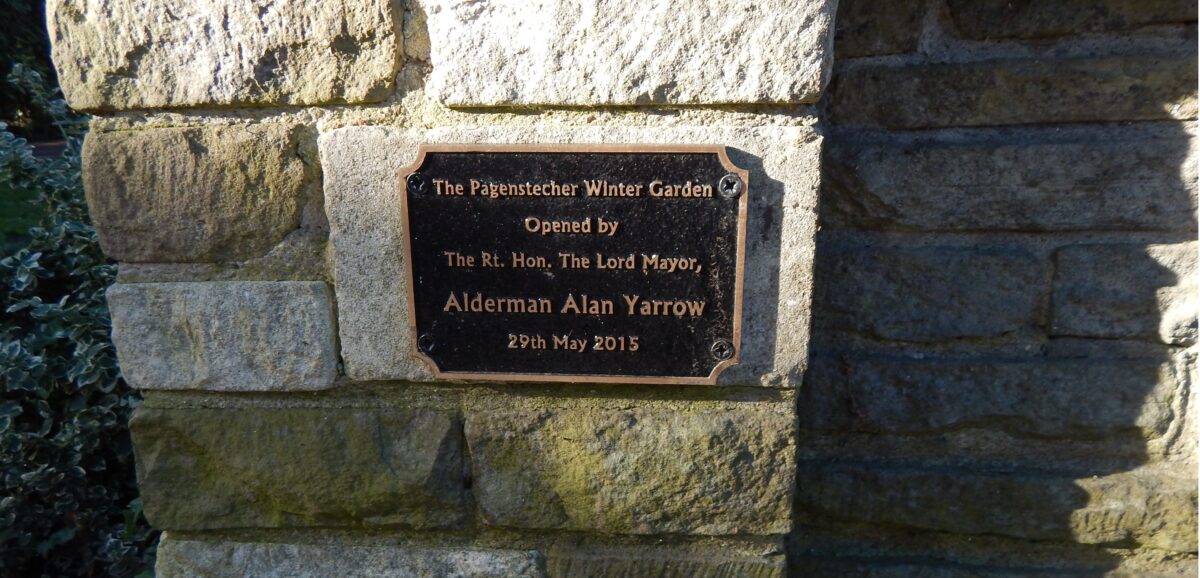Gustav Pagenstecher 1829 – 1916
Our interest in West Ham Park begins with Dr Fothergill who owned the house and estate, that was to become the park, from 1762 to 1780. Originally smaller than it is now, but over the years he increased his holding, able to do so from the income from his lucrative practice as a physician and his investments.
Fothergill paid plant collectors to bring him plants from across the world. Once at the estate, Fothergill either planted them outside or, the less hardy, in his extensive greenhouses. He employed illustrators to paint his plant collection. When Fothergill died in 1780 his heirs sold off the plant paintings to Catherine the Great, Empress of Russia. They remain in Russia to this day, in an archive near St Petersburg, hardly ever seen. Friends of West Ham Park had hopes of getting access to them, but our current relationship with Russia, over the war in Ukraine, makes this currently impossible.
There is a shrub named after Fothergill, Fothergilla major. It is a small shrub which has bottle brush like white flowers in late spring. The leaves in autumn go from green to orange, yellow and red.
In the early 19th century the house and estate came into the ownership of the Gurney family. In 1860 John Gurney employed Gustav Pagenstecher as tutor to his family, and general factotum. Pagenstecher was born in Westphalia, Germany in 1829. He came to England in 1852 to avoid military service. These were the years of growing militarisation, just before era of Bismarck, the Iron Chancellor who made the country increasingly so.
In the 1870s the Gurneys had financial problems when their bank failed and wanted to sell Ham House, as the house and estate was then known. Pagenstecher was keen it should become a public park, as if bought by commercial interests the estate would inevitably be developed for housing and he persuaded John Gurney to go for the park option.
There was some local fundraising to buy the estate, but the lion’s share came from the London Corporation who contributed £10,000. The park opened in 1874. The London Corporation has managed it ever since. Pagenstecher became deputy chairman of its board of trustees from its establishment as a park until he died in 1916. He wrote the first history of the park.
Katherine Fry, the daughter of Elizabeth Fry – the prison reformer, had written extensive notes and had a jumble of papers on the history of East Ham and West Ham. Pagenstecher took it over, added to it, and put it in order. The book came out in 1888 for which Katherine was given all the credit, somewhat peeving Pagenstecher.
He was a successful fundraiser for West Ham hospital, and was on the committee of Essex County Cricket Club and one of the Peabody Trustees. He moved into a cottage on Portway, at the south end of the park in 1869 until his death.
Pagenstecher was well know in the area and honoured for his work setting up West Ham park and his committee and charitable work. This all came to a sad end in 1914 with the first World War. He was treated as an enemy alien, although 85 years old, and had to report to the police station daily. This embittered him, having done so much for the area. He died in 1916.
There is a small plaque acknowledging him in West Ham Park. It’s on the bridge at the south end of the ornamental Garden. It says:
The Pagenstecher Winter Garden
Opened by the Lord Mayor, Alderman Alan Yarrow
29 May 2015
The winter garden is by the bridge, in a hollow. I went to see it a few days ago. The only flowers were hellebores. But it makes the most of colourful leaves, bark and stems, like the red stems of dogwood, variegated elaeagnous, the white bark of the silver birch. There’s mahonia with its holly like leaves, about to flower, camellia soon to flower too, spruce with its blue green needles and festuca, an ornamental grass. A little recognition to Gustav Pagenstecher’s part in the creation of West Ham Park.

